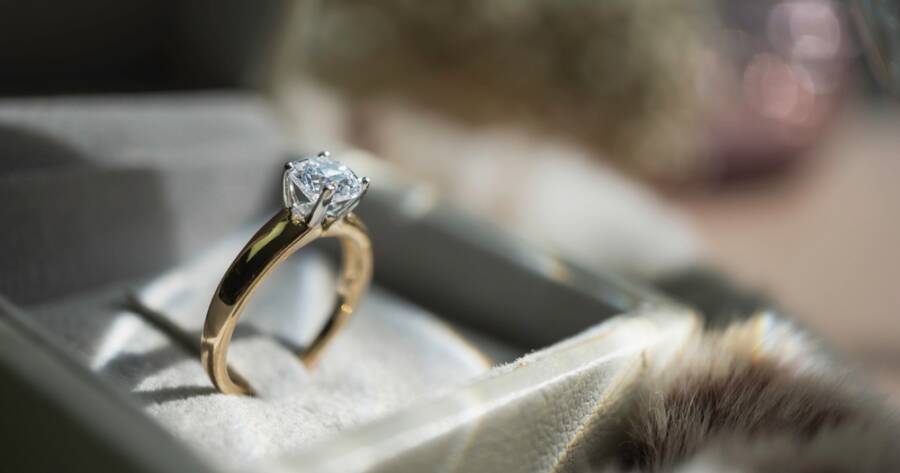Lab-created diamonds have gained significant popularity in recent years, as consumers increasingly prioritize sustainability, ethical sourcing, and cost-effective alternatives to mined diamonds. These diamonds are chemically, physically, and optically identical to natural diamonds but are created in controlled laboratory settings. Explore the prices and value of lab-created diamonds in Great Britain, including factors that influence their cost and the reasons why they may be the ideal choice for some consumers.
What Are Lab-Created Diamonds?
Lab-created diamonds, also known as synthetic or man-made diamonds, are real diamonds that are produced using advanced technological processes that mimic the natural conditions under which diamonds form deep within the Earth. There are two primary methods for creating lab-grown diamonds:
- High Pressure High Temperature (HPHT): This method replicates the extreme pressure and temperature conditions that occur naturally in the Earth’s mantle, allowing carbon to crystallize and form a diamond.
- Chemical Vapor Deposition (CVD): In this process, a carbon-rich gas is used to form diamonds on a substrate, creating the diamond layer by layer. CVD diamonds are often more commonly used in jewelry production.
While both methods result in diamonds that are virtually identical to natural diamonds, lab-created diamonds are much more affordable and provide an ethical alternative, as no mining is required.
Factors Influencing the Price of Lab-Created Diamonds
The cost of a lab-created diamond can vary significantly based on several factors. While these diamonds are generally more affordable than their mined counterparts, understanding the factors that affect their price can help you make a well-informed purchase.
– Carat Weight: Like natural diamonds, the price of lab-created diamonds increases with carat weight. Larger diamonds require more raw materials and longer production times, driving up the cost.
– Cut: The cut of a diamond refers to how well it has been shaped and faceted. A well-cut diamond maximizes brilliance and sparkle, while a poor cut can reduce a diamond’s overall visual appeal. Lab-created diamonds with higher-quality cuts will be priced higher.
– Clarity: Clarity measures the presence of internal or external flaws, known as inclusions or blemishes. Diamonds with fewer inclusions are considered higher quality and are priced accordingly. Lab-created diamonds are typically more likely to have fewer inclusions than natural diamonds, which can impact the price.
– Color: Diamonds are graded on their color scale from D (colorless) to Z (light yellow or brown). Lab-created diamonds that are closer to colorless, particularly those graded D-F, tend to be more expensive.
– Brand and Certification: The brand behind the diamond and whether it comes with a certification from a reputable gemological laboratory, such as the Gemological Institute of America (GIA), can also influence price. Certified diamonds with detailed grading reports tend to cost more because they come with greater assurance of quality.
Price Comparison: Lab-Created Diamonds vs. Mined Diamonds
One of the most attractive features of lab-created diamonds is their price. Lab-created diamonds typically cost less than their mined counterparts of the same size, cut, clarity, and color. This price difference can be attributed to the lower production costs of lab-grown diamonds and the absence of mining-related expenses, such as excavation, transportation, and environmental restoration.
The savings can be significant, especially for consumers seeking a larger diamond or higher-quality features.
The Value of Lab-Created Diamonds
While lab-created diamonds may not have the same rarity as mined diamonds, they hold significant value in several areas:
- Ethical Considerations: Lab-created diamonds offer a conflict-free, eco-friendly option, eliminating the environmental destruction and human rights concerns associated with diamond mining. For many consumers, this makes lab-created diamonds a more socially responsible choice.
- Durability: Lab-created diamonds are made of the same material as natural diamonds—pure carbon arranged in a crystal structure—meaning they have the same hardness (10 on the Mohs scale) and long-lasting durability. They are just as resilient and resistant to scratches, ensuring that your diamond will retain its beauty for generations.
- Affordability: The price of a lab-created diamond is undoubtedly one of its biggest advantages. By choosing a lab-created diamond, consumers can access the same level of beauty and elegance as a mined diamond, but at a significantly reduced cost. This makes them an excellent option for engagement rings, wedding bands, or other significant occasions.
- Customizability: Many companies that sell lab-created diamonds offer customization options, allowing consumers to choose the shape, cut, and setting that best suits their preferences. This flexibility, combined with the cost savings, allows for a more personalized experience.
Lab-Created Diamonds – Affordable, Ethical, and Just as Brilliant
Lab-created diamonds are an excellent choice for consumers in Great Britain who seek quality, beauty, and ethical sourcing, all at a lower price point than mined diamonds. With their equivalent physical properties, including durability and brilliance, lab-created diamonds provide a competitive alternative to traditional diamonds. By understanding the factors that influence their price and value, you can make an informed decision and enjoy the beauty of a diamond without compromising your budget or values. Whether you’re looking for an engagement ring, a statement piece, or an investment in sustainable luxury, lab-created diamonds offer a modern and responsible option.

